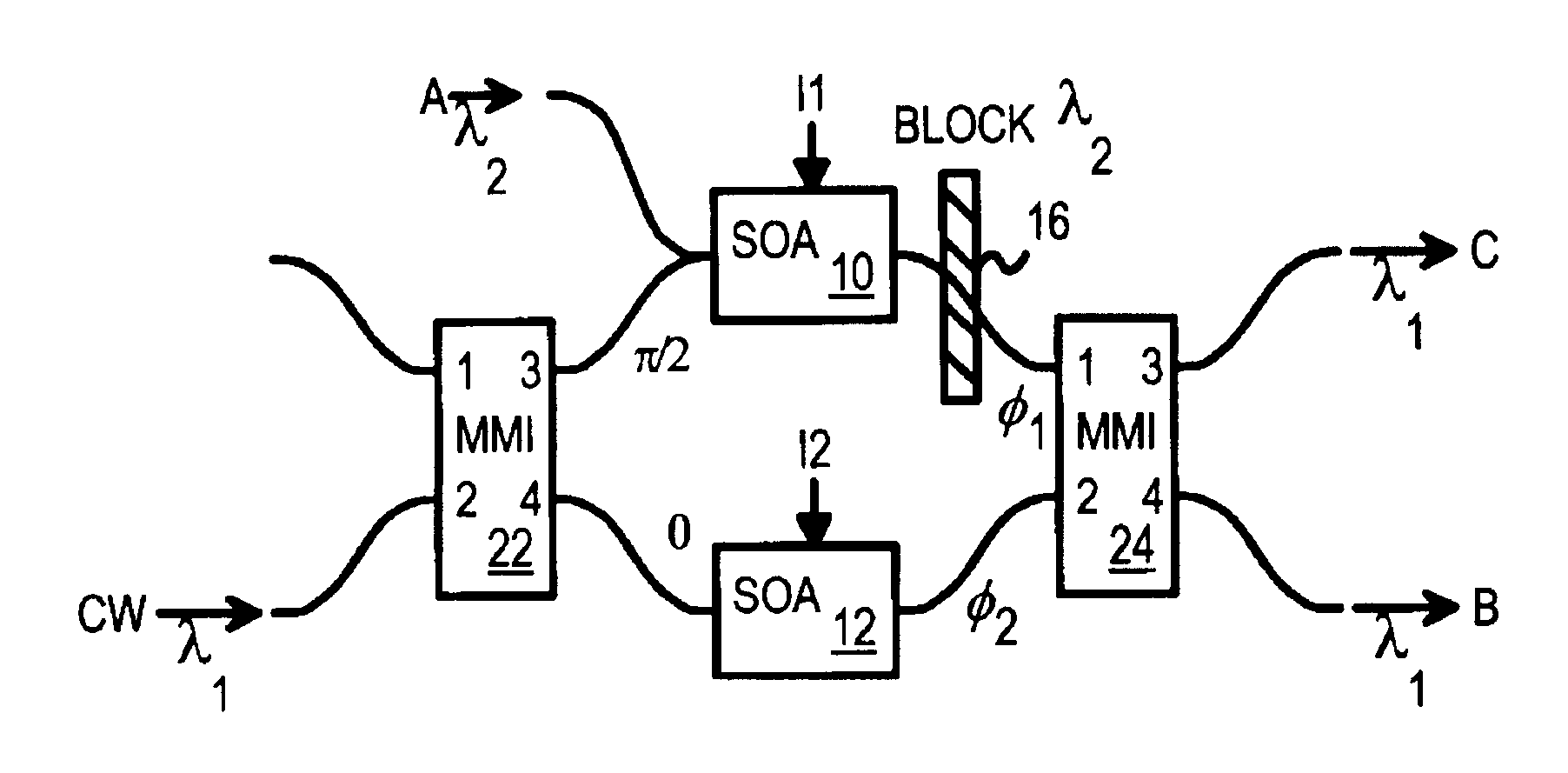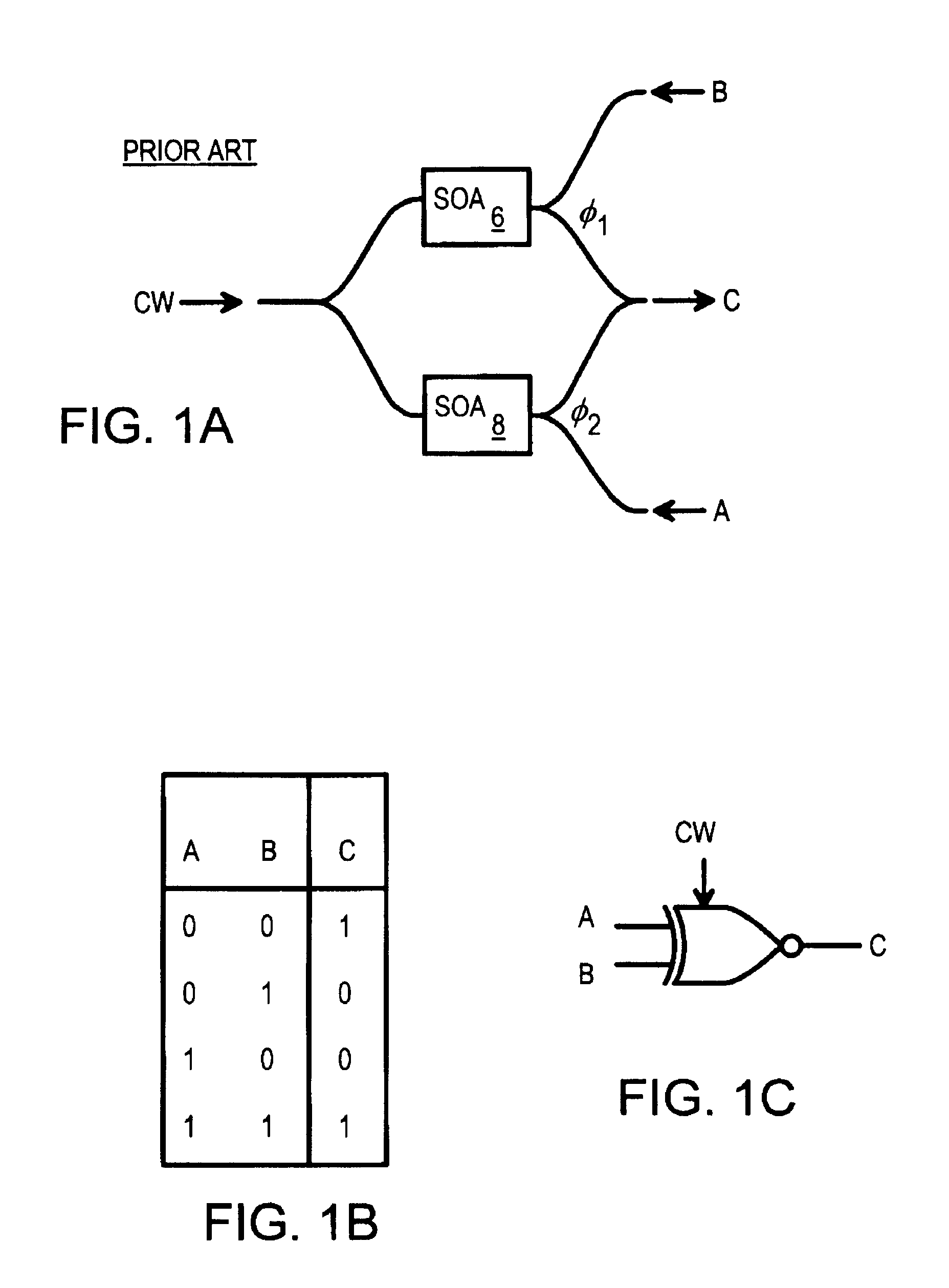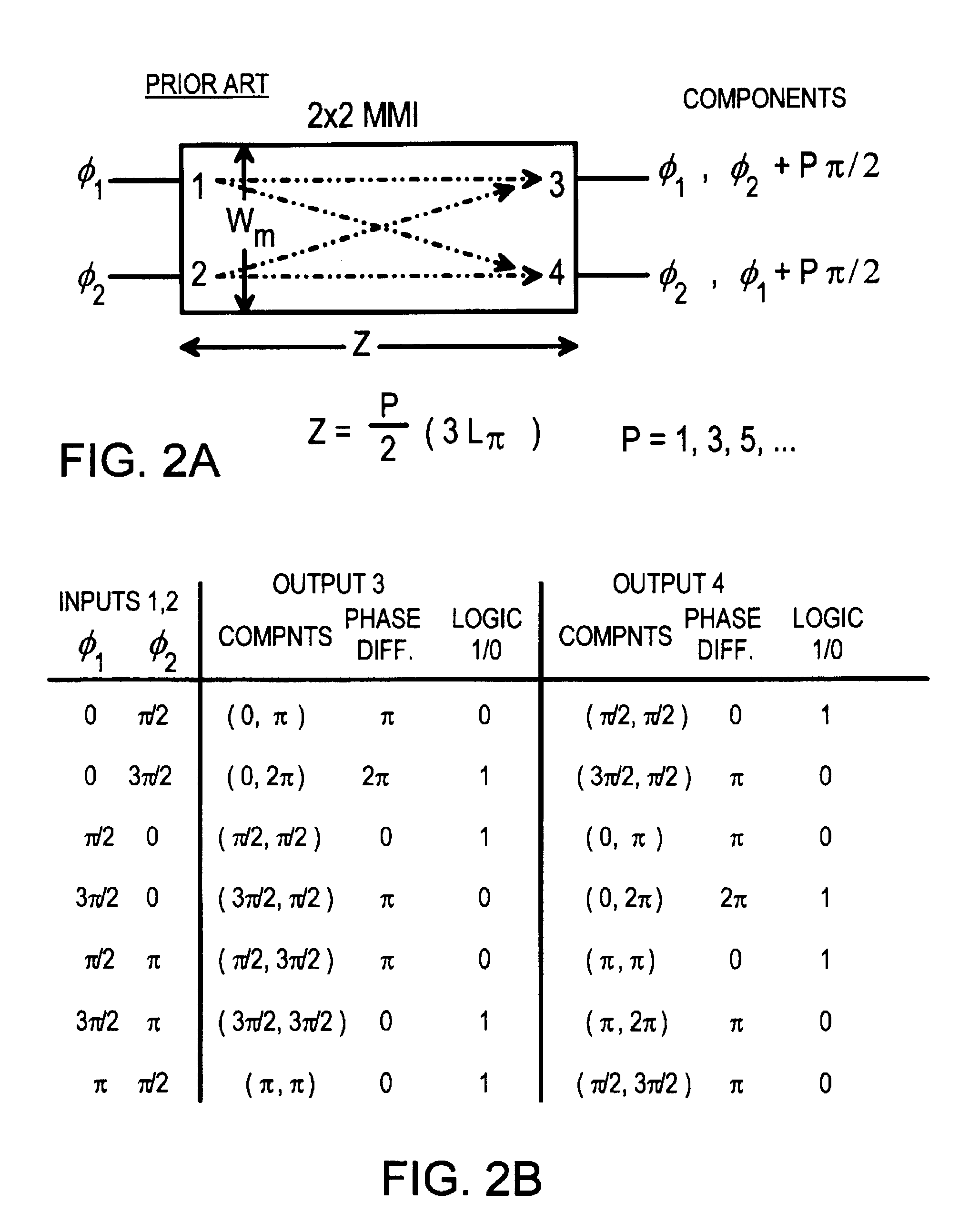All optical logic using cross-phase modulation amplifiers and mach-zehnder interferometers with phase-shift devices
a phase-shift device and amplifier technology, applied in the field of all optical logic, can solve the problems of difficult production, high cost, and high cost of optical logic elements, and achieve the effects of reducing the cost of production
- Summary
- Abstract
- Description
- Claims
- Application Information
AI Technical Summary
Problems solved by technology
Method used
Image
Examples
Embodiment Construction
Several other embodiments are contemplated by the inventors. For example, larger MMI devices could be used, and logic gates with more inputs produced. Even larger, more complex logic functions with multiple inputs are contemplated, such as AND-OR networks.
Semiconductor optical amplifiers (SOA's) can be constructed from a variety of materials. Rather than use an electrical bias current to the SOA's, an optical pump bias could be used, or some other energy-adding method. The SOA's or phase shifters could also operate with a phase shift that is normally .pi., or some other value, rather than normally 0, in the absence of optical power from the logic input signal. The bias could be fixed into the SOA's or the branches. The relative phase shifts of the two SOA's could also be set to differ in the absence of optical power from logic input signal. The MMI's could vary in design and have diagonal phase shifts other than .pi. / 2.
While the phase differences among the two SOA's has been describ...
PUM
| Property | Measurement | Unit |
|---|---|---|
| phase | aaaaa | aaaaa |
| optical | aaaaa | aaaaa |
| wavelength | aaaaa | aaaaa |
Abstract
Description
Claims
Application Information
 Login to View More
Login to View More - R&D
- Intellectual Property
- Life Sciences
- Materials
- Tech Scout
- Unparalleled Data Quality
- Higher Quality Content
- 60% Fewer Hallucinations
Browse by: Latest US Patents, China's latest patents, Technical Efficacy Thesaurus, Application Domain, Technology Topic, Popular Technical Reports.
© 2025 PatSnap. All rights reserved.Legal|Privacy policy|Modern Slavery Act Transparency Statement|Sitemap|About US| Contact US: help@patsnap.com



